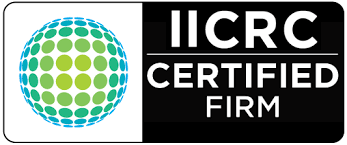Advanced Techniques in Biohazard Cleanup

-
Electrostatic Spraying Systems
Electrostatic spraying involves applying a charge to disinfectants as they are sprayed, ensuring even coating and adherence to surfaces, including hard-to-reach areas. This technique enhances the effectiveness of decontamination by ensuring comprehensive coverage.
-
Hydrogen Peroxide Vapor (HPV) Systems
HPV systems disperse vaporized hydrogen peroxide to sterilize environments. The vapor penetrates nooks and crannies, effectively eliminating pathogens on surfaces and in the air, making it invaluable in infectious disease decontamination.
-
Robotic Cleanup Technologies
Robotics equipped with cameras and disinfection tools can navigate hazardous areas, performing cleaning tasks while minimizing human exposure. These robots are particularly useful in environments with high contamination levels, ensuring precise and safe biohazard remediation.
-
Advanced Personal Protective Equipment (PPE)
Modern PPE includes suits with integrated cooling systems, enhanced mobility, and superior barrier protection. Innovations in PPE design ensure that biohazard cleanup professionals can perform their duties safely and comfortably, reducing the risk of contamination.
State-of-the-Art Equipment in Biohazard Remediation
-
High-Efficiency Particulate Air (HEPA) Filtration Systems
HEPA filters are capable of trapping 99.97% of airborne particles, including bacteria and viruses. These systems are essential in purifying the air during and after biohazard cleanup operations, ensuring that airborne contaminants are effectively removed.
-
Ozone Generators
Ozone generators produce ozone gas, which neutralizes bacteria, viruses, and odors. They are particularly effective in eliminating persistent odors resulting from decomposition or chemical spills, thereby restoring the environment to a safe and habitable state.
-
Fogging Machines
Foggers disperse disinfectant solutions into fine mists, allowing for the treatment of large areas efficiently. This method ensures that all surfaces, including those that are difficult to reach manually, are thoroughly disinfected, making it a staple in comprehensive biohazard cleanup.
Importance of Advanced Techniques and Equipment
The adoption of these advanced techniques and equipment in biohazard cleanup offers several benefits:
-
Enhanced Safety
Utilizing state-of-the-art equipment reduces the risk of exposure to hazardous materials for cleanup crews and occupants. For instance, robotic technologies can handle dangerous tasks, minimizing human contact with biohazards.
-
Improved Efficiency
Advanced methods like electrostatic spraying and fogging allow for quicker decontamination of affected areas, reducing downtime and facilitating faster restoration. This efficiency is crucial in scenarios where time is of the essence, such as in public health emergencies.
-
Comprehensive Decontamination
Modern technologies ensure that all pathogens, including those in hard-to-reach areas, are effectively neutralized, providing a thorough and reliable biohazard remediation process. This comprehensive approach is vital to prevent the recurrence of contamination and to ensure the safety of the environment.
In conclusion, the integration of advanced techniques and equipment in modern biohazard cleanup is essential for ensuring safety, efficiency, and thorough decontamination. As the field continues to evolve, staying abreast of technological advancements will be crucial for professionals dedicated to effective biohazard remediation.

















